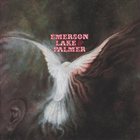

The Carousel Ballroom, a San Francisco-based music venue that mainly held blues performers such as B.B. King and other African American jazz artists in the 1960s, found itself under the control of a musical conglomerate composed of bands like the Grateful Dead, Jefferson Airplane, among others in 1968. These bands intended the venue to be a socio-musical experiment to attract audiences in the San Fran/Haight-Ashbury area. Needless to say, the idea wasn't too successful. Former promoter, Bill Graham, took the reigns in '68, hoping to achieve some success similarly with the hall. However the seating capacity of the hall was lackluster at best, and was not nearly grandiose enough to attract the atrophying community surrounding it. In New York City, Graham owned a similar auditorium by the name of Fillmore East which he had acquired not four months earlier. Deciding to seek a better location, the newly-born Fillmore West was born less than a mile away from the original Carousel Ballroom's location. Fillmore West would go on to host a variety of performances, such as Californian regulars the Grateful Dead, as well as Santana, Quicksilver Messenger Service, etc. It should be noted that this performance hall came at a very special time, one known to birth many prolific rock bands all across Europe and North America -- the late '60's. Taking place well into what was colloquially referred to as the Psychedelic Era, rock bands of the time were keen on trekking the globe on large extensive tours, where droves of audiences happened to follow them wherever they went. One of the younger of these acts was King Crimson, who, in December of 1969, co-headlined concerts at Fillmore West with London-based jazz rockers The Nice, a band apart of a similar progressive mindset as Crimson. It was there that keyboardist Keith Emerson from The Nice and bassist Greg Lake from King Crimson met and struck up a quick and steadfast friendship. As their series of performances came to a close, Emerson and Lake were already discussing the prospect of forming a new group. The one musician the band the two needed was a drummer, and after a series of unsuccessful tryouts and careful consideration, the band decided on Carl Palmer, known for his work in both The Crazy World of Arthur Brown and Atomic Rooster. The trio was now set in stone, and a debut album was set in motion. Lake, similarly to how he had in King Crimson, acted as producer, began collecting songs performed previously in the band's gigs, and began executing them in the studio format. Thus, in November 1970, the band's self-titled studio work was born.
Emerson Lake & Palmer, and by that I do mean the album, is perhaps the purest form of skill, intelligence, and understanding of zeitgeist the band ever cared to show. With a 6-track runtime (par for the course for any semi- self-conscious progressive rock band in 1970), the album doesn't exude any overbearing smugness that the band would come to be criticized for. From beginning to end the album is very poignant musically, aside from hitting a few snags and some inopportune times. Starting with the crunching proto-metallic surge of 'The Barbarian', a rock arrangement of ethnomusicologist Béla Bartók's 'Allegro barbaro', ELP manages to pack a big punch in a short amount of time. Unlike many latter releases, ELP's debut does not contain huge quasi-orchestral suites, instead opting for simply semi-lengthy tracks. The majority of the tracks tend to be a mix of clear songwriting and extensive jams. This is clear from the second track, the epic 'Take a Pebble'. Also clear is a certain dichotomy that only got more pronounced as the band aged; because the band is comprised of only 3 admittedly skilled musicians, each member makes what is almost a silent effort to outdo each-other in terms of unabashed bravado. This especially rings true for Keith Emerson, who not only has a luxuriously no-holds-barred piano solo what seems like every 3 minutes, but also permeates the rest of the album with a multitude of synthesized soundscapes that, with multiple listens, can get extremely grating. This relationship between the band members also can create unenjoyable pandemonium, which it seems the band is blissfully unaware is in fact unenjoyable, especially on songs like 'The Three Fates' (said pandemonium occurring funnily enough directly after one of Emerson's solos). This is all prone to subjectivity though, as the band still manages to hit some rather great points. The heavy riffs that the band occasionally pumps out like on the aforementioned 'The Barbarian' and 'Knife-Edge' are much in the vein of Greg Lake's parent band Atomic Rooster, and are thus very well received. 'Tank' may pleasure me with a bias -- as a drummer and a certain fan of Greg Lakes work I'm easily enraptured by a drum solo from the man coincided with some bouncy synth. 'Lucky Man' seems to hold a certain amount of bad blood with prog-fans, however I personally found myself rather warm towards the track's cheesy qualities, not to mention I'm a sucker for some good vocal harmonies.
Upon release, this album was hailed as a mighty fine one, and it's not hard to see why. Right out of the gate Emerson, Lake & Palmer is passionate and alight with unbridled genius. ELP now had a tight grasp on the attention of the outside world, and nearly everything was set up in anticipation for the band's next big hit.